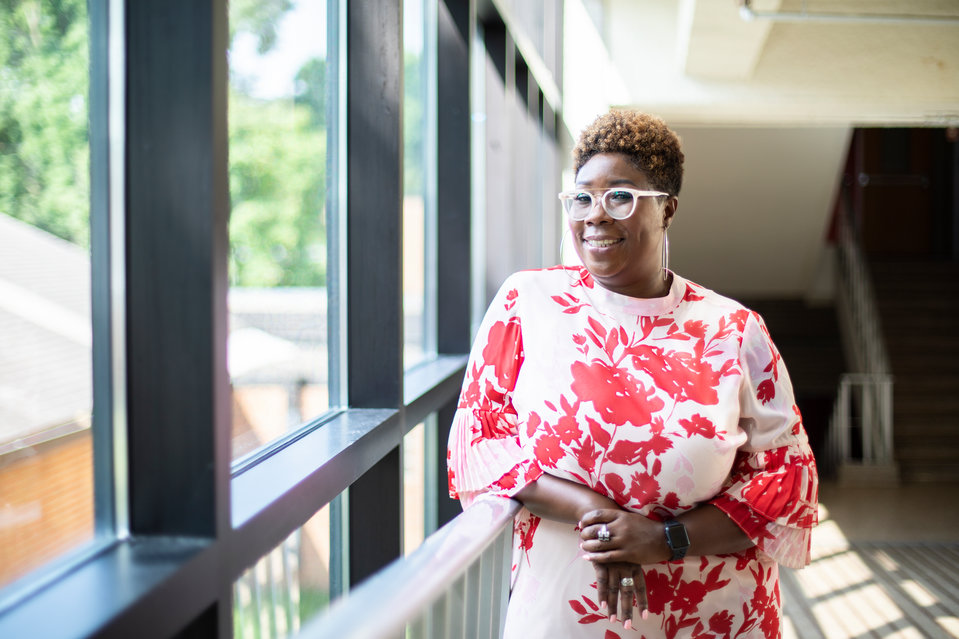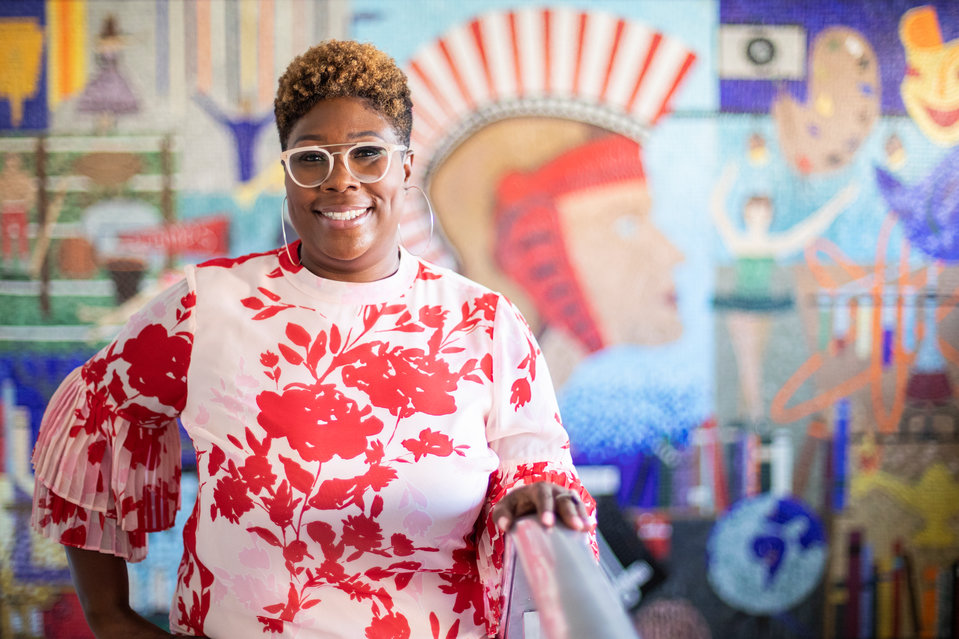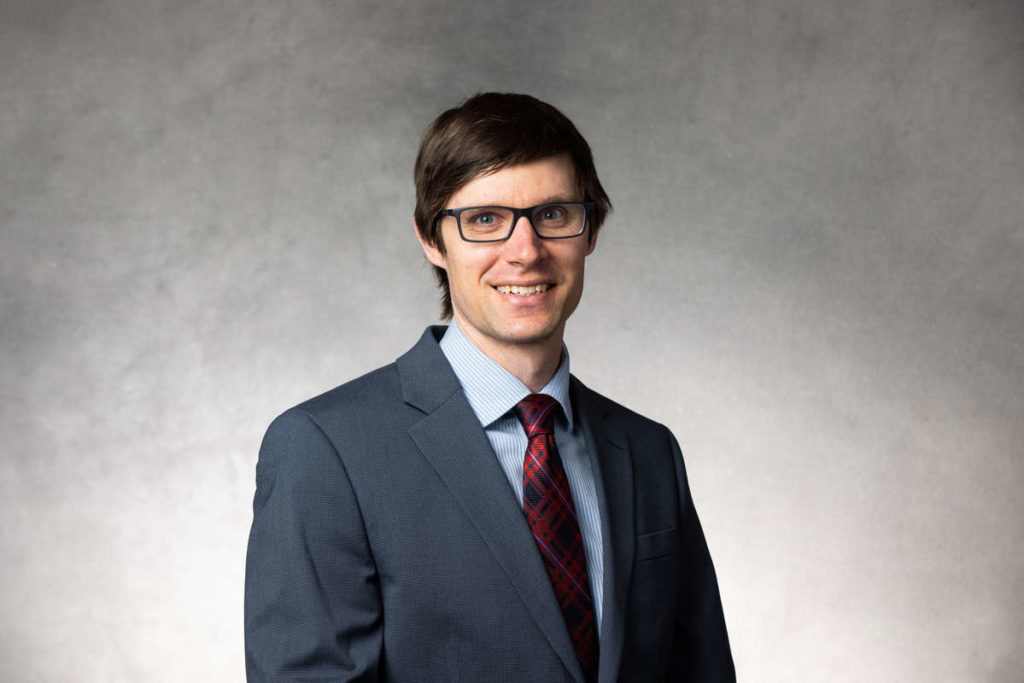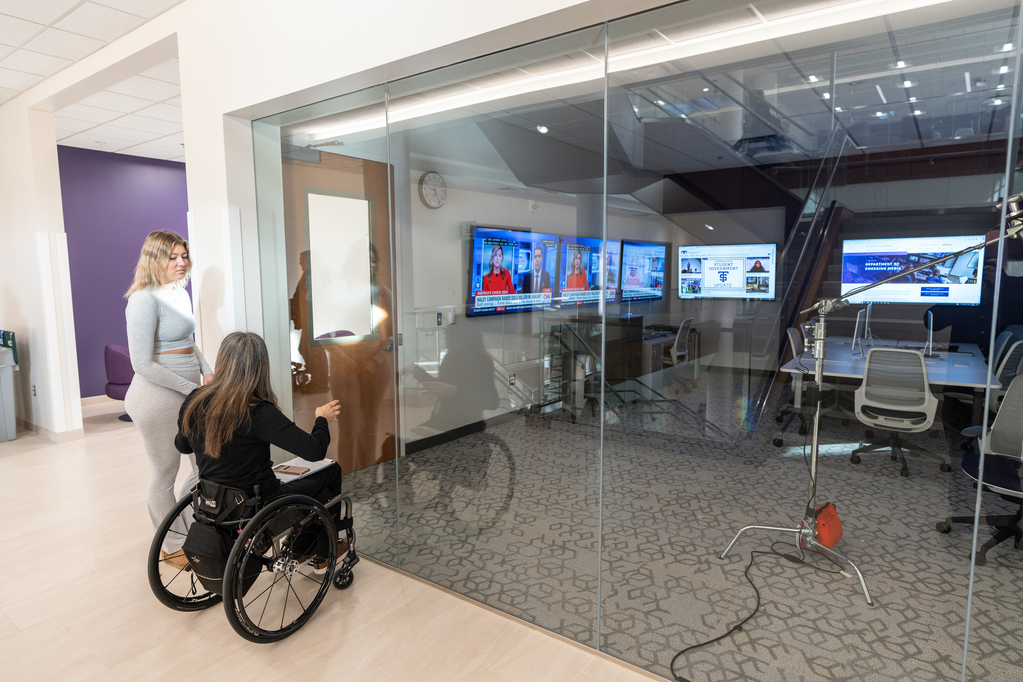Eight years ago, Latanya Daniels was standing in the parking lot of a suburban mall when her phone rang. It didn’t take long before she was jumping up and down: The call was a job offer as principal at Patrick Henry High School in Minneapolis.
“It was one of my dreams to be a high school principal,” Daniels said recalling that day in 2010. “I wanted to be in north Minneapolis because I felt like I had a goal. I had a mission and I wanted to – through my work and the work of others on the team – prove that the race of a kid doesn’t matter, the geographic location of a school doesn’t matter, or the student’s ZIP code. All students can achieve if you have high expectations and put supports in place to make sure they’re successful.”
Originally, Daniels thought she was going to be an engineer, but things took an unexpected turn. While pursuing her undergraduate degree at the University of Minnesota, she discovered her true calling was working with people. She switched her major to sociology and after graduation started working in the Minneapolis school system, where she eventually worked her way into leadership positions. At the University of St. Thomas, Daniels earned her master’s (’01) and education specialist (’04) degrees from the School of Education. Now she’s working on her doctorate.
“Latanya stands out as a doctoral student who is very passionate about student achievement, student learning and establishing conditions where there’s strong academic rigor as well as a real investment in the social and emotional growth of students,” said Sarah Noonan, chair of the Department of Educational Leadership in the School of Education. Noonan is also Daniels’ adviser and dissertation chair.
Becoming a high school principal
Always with the goal of doing what’s best for her students front of mind, Daniels isn’t afraid to shake things up. As a high school principal at Patrick Henry for five years, she worked on a myriad of issues, including violent altercations on school property, graduation rates and a frustrated staff.
During her time at Patrick Henry, math scores increased, the school earned a Reward school designation two years in a row and graduation rates rose to 86 percent. In 2014, first lady Michelle Obama visited the school for a get-out-the-vote rally. A year later, U.S. News & World Report named Patrick Henry the third best high school in Minnesota.
Then Richfield came calling. Daniels wasn’t planning on leaving Patrick Henry. In fact, she says she turned down an offer to apply for the Richfield High School principal job three times. The folks who were trying to recruit her to Richfield presented her a challenge she couldn’t resist – to break the stereotype that black women education leaders can only be successful in urban environments with predominantly black students.
“I was intrigued and drawn in by creating another narrative around black women education leaders in metropolitan areas,” she said. “I applied and got the position. Now we’ve begun the work to say to the metro area that black women do not just have to work in predominantly black areas with predominantly black kids to be successful. We can be successful anywhere if you provide us the support we need to succeed.”

From urban to suburban
At Richfield High School, Daniels has been facing challenges head-on since arriving at the suburban school for the 2015-2016 school year. She identified key issues the school faced and started working on them immediately.
“The students were very lackadaisical and almost apathetic about education,” she said. “You saw very little urgency around getting to class on time, little urgency around getting to school on time. Students would just linger in the hallways as if they had all the time in the world. We needed to create that sense of urgency around education.”
After just two years with Daniels at the helm, the number of failing students at Richfield decreased by more than 40 percent, while graduation rates increased. Daniels has also removed barriers that kept students – especially students of color – from signing up for advanced courses.
“Another observation I made when I first came here was that we had a divided school and we had a segregated school,” she said. “I would walk into an advanced class and it was practically all white. I would walk into another class and it was all black and Latino. I couldn’t unsee that. We needed to change the culture around getting an education and what that looked like.”
Daniels believes in engaging students and taking them from where they are to where they need to go. In an effort to get more students excited about advanced courses, Daniels and her staff opened access to those classes to all students. They also added supplemental support to help students succeed.
“We added an additional class period for a seven period day to provide more opportunity for our students to explore and take classes that they’re interested in,” she said. “We also provide students that are taking more advanced or rigorous courses support. For example, we offer AP World History, so we have an AP World History support class. If a student has not traditionally been in an honors or advanced class, they could take that AP World history Class and also take the support so they could do well in the class.”
The students responded to this change positively. Unlike when she first arrived at Richfield, Daniels is seeing more students of color taking advantage of the advanced courses.
“There is now a combined 45 percent of Latino and black students taking rigorous courses – that’s a huge shift in what I was visually seeing when I became principal,” she said. “We still have some disproportionality, but we’ve made significant gains.”
Daniels credits teamwork for all the positive changes she’s made during her career as a principal. And, she said, she’s grown in her ability to show her vulnerability during the past eight years.
“I’m proud of my Richfield staff for enduring all the changes they’ve had to go through under my leadership and hanging tight,” Daniels said. “I know they’ve been kicking, screaming, but there’s been a critical mass that have said, ‘OK, we’re on board.’ For those who decided they couldn’t endure the rigor of the changes, we’ve been able to hire some amazing people whom I’m excited to work with this school year.
“When I think about my Patrick Henry and Richfield staffs, it’s been so many wins,” she continued. “But it was the work we did together – when we were able to put differences aside and say this is our goal, this is our purpose, let’s get it done – that’s what makes me so proud. When we work together our students shine.”
For Daniels, shaking hands and hugging students when they walk across the stage at graduation makes all the hard work worthwhile. Her proudest moments have been seeing her staff work together and watching her students succeed.
“Last year we graduated 225 students – that was the biggest number in four years at Richfield High School,” she said. “This year 240 kids walked across the stage – our students are winning!”
Doctoral work
When she stops to examine her constantly evolving work during her two decades in education, Daniels says St. Thomas has provided her the opportunity to be a leader in her field and an advocate for her students. She first started at St. Thomas through the School of Education’s Collaborative Urban and Greater Minnesota Educators of Color (CUE) Scholarship Program – a public/private partnership between the University of St. Thomas and the State of Minnesota dedicated to increasing teacher diversity in Minnesota.
“St. Thomas has always been a front-runner around these creative alliances and relationships in pushing people who are underrepresented in education,” she said. “Because I came into education and actually started my relationship with St. Thomas through the CUE program, St. Thomas provided me the foundation. The CUE program was step one – the teaching licensure program.”
Her current St. Thomas studies have been “eye-opening” and “affirming,” Daniels said. For her doctoral dissertation, she’s looking at the experiences of African-American women in secondary education, who are leading a predominantly white faculty to raise achievement for students of color. It’s an area she’s experienced firsthand.
When asked about Daniels’ strengths, her advisor Sarah Noonan doesn’t hesitate to answer.
“She’s extremely curious and persistent,” Noonan said. “She will persevere; she will get to the bottom of issues. She’ll look for ways to engage people in the dialogue. She’s willing to examine what her part might be in a conflict, what she can do to change herself to invite more people to participate in the change efforts. That’s a tricky role because you have to stand firm on the principles and values that you’re bringing into the educational process, while at the same time be willing to fully engage people, sometimes people who don’t share your views or your methodology in the work itself.”
Without a doubt, the education Daniels has received at St. Thomas has left a big impact.
“The doctoral program strengthened me as a leader and has made me unabashedly clear about my purpose,” she said. “It changed my life.”







